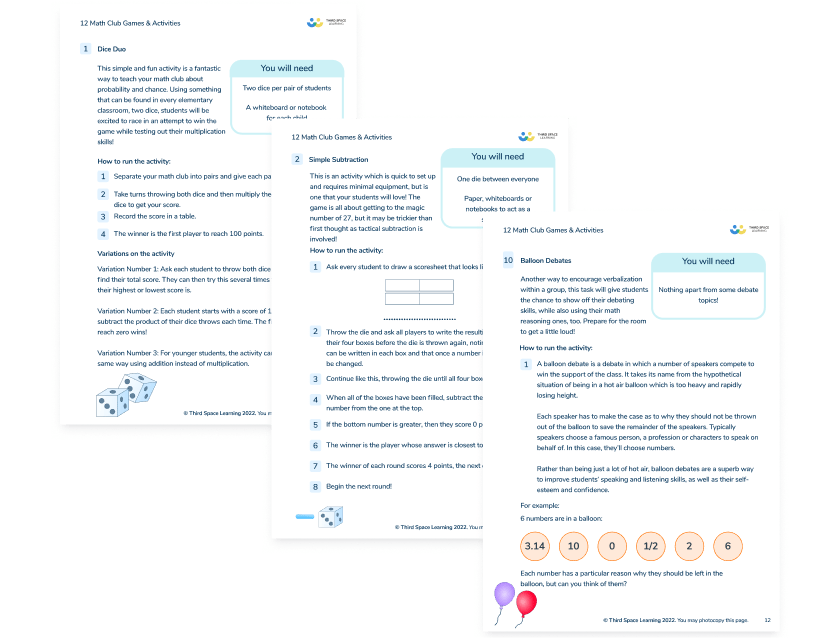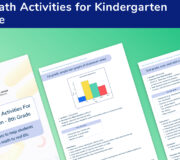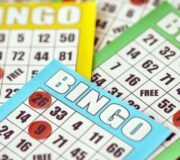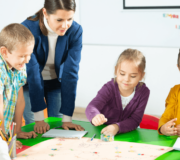10 Fun Thanksgiving Math Activities For All Your Elementary Students
With Thanksgiving around the corner, it’s time for you to incorporate Thanksgiving math activities into your fall classroom routine. Here we’ve put together 10 Thanksgiving math activities to engage all your students and infuse some seasonal fun into your classroom. These can be easily adapted based on the grade level being taught!
Native American history and culture are frequently discussed in schools around the Thanksgiving holiday and during November, which is National Native American Heritage Month.
Celebrated on the fourth Thursday in November, Thanksgiving traces its origins to harvest festivals. It was customary to express gratitude for a bountiful harvest in the cultures of both the Pilgrims who sailed from England in 1620 and the Native Americans they encountered (U.S. Embassy and Consulates, 2023). While Thanksgiving is often viewed differently from the perspective of the Native Americans and the Europeans, its roots have formed the foundation for harvest celebrations everywhere around this time of year.
The Thanksgiving holiday is usually synonymous with gratitude, comfort food, and family gatherings. It can also be a time of service to others in the community.
Thanksgiving Math Activities
Celebrate Thanksgiving in class with these 10 fun Thanksgiving math activities.
Download Free Now!In school, Thanksgiving is a great way for you to encourage your students to express gratitude for their learning opportunities. We believe putting fun math activities and mental math games into your lesson plans is a great way to ensure all your students feel thankful for math.
The activities we’ve listed incorporate the following (and more!):
- Problem-solving skills: Thanksgiving games and activities are great for math practice and will build your students’ problem-solving skills. The activities enable your students to apply their math skills to engaging, real-life scenarios related to Thanksgiving.
- Reasoning skills: Students apply their understanding of number concepts and algebraic reasoning and justify their solutions and reasoning skills.
- Number concepts and relationships: Provide students with a variety of engaging Thanksgiving activities with themes to help them connect addition, subtraction, multiplication, and division with real-world scenarios.
- Algebraic reasoning and multiple representations: Students explore functional relationships using real-world situations related to Thanksgiving and represent their solutions as equations.
10 Thanksgiving math activities and ideas
Here you will find a list of 10 Thanksgiving math activities and ideas. These can be easily adapted depending on the grade level.
Activities for Grade K to Grade 2
Here you will find Thanksgiving math games and activities which can be used from Kindergarten up until 2nd grade.
1. Make your own turkey
You will need:
- Paper plate
- Sponge
- Clothespin (optional)
- Paint (red, orange, yellow, brown)
- Googly eyes
- Scissors
- Glue
What to do:
- Cut the paper plate in half.
- Using the sponge (and clothespin if you’d like), sponge paint one half of the paper plate with red, orange, and yellow paint.
- While that’s drying, use the other half of the paper plate to cut out a circle, beak, and snood.
- Sponge paint the circle brown, the beak orange, and the snood red.
- When all the pieces are dry, glue the pieces together to make your very own turkey. Don’t forget to add the eyes, too! You may wish to also add in turkey feathers too.
Make it harder:
- Give the students pictures of the directions for this turkey activity, but cut these all up. Can they work together to put the directions in order before they make their own turkey?

Meet Skye, the voice-based AI tutor making math success possible for every student.
Built by teachers and math experts, Skye uses the same pedagogy, curriculum and lesson structure as our traditional tutoring.
But, with more flexibility and a low cost, schools can scale online math tutoring to support every student who needs it.
Find out more2. Turkey counting
Using Thanksgiving counting activities can be a helpful way to learn basic math facts to do with numbers. There are a number of games students can play with this turkey ten frame.
You will need:
- Dice
- Turkey Ten Frame
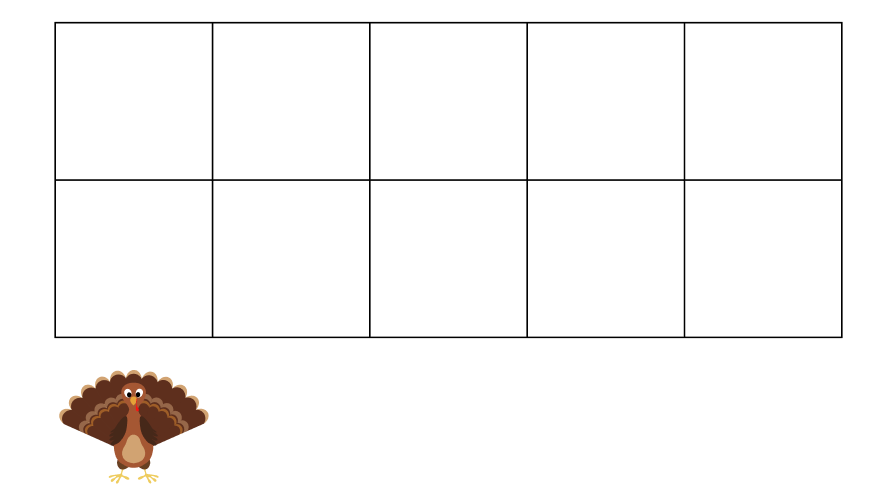
What to do:
- In groups of two, Student 1 rolls the die and places that number of counters on the 10 frame.
- Student 2 then works out the number of counters needed to make 10 using a different color of counters.
- Student 1 records the addition number sentence showing the addends which equal 10.
- Students then switch roles and Student 2 rolls the die.
Make it harder:
Make it harder by asking these debriefing questions:
- What does the word “zero” mean? Where is it on the number line?
- Split 10 turkeys into two groups. Can you do it a different way? Can you split the ten turkeys into three groups?
- Can you count to 10? Can you count down from 10?
3. Thanksgiving grouping
This game involves students looking for similarities and differences between Thanksgiving foods. This will help your students to classify objects from a Thanksgiving meal in different ways.
You will need:
- Thanksgiving items (we have included some printable images)
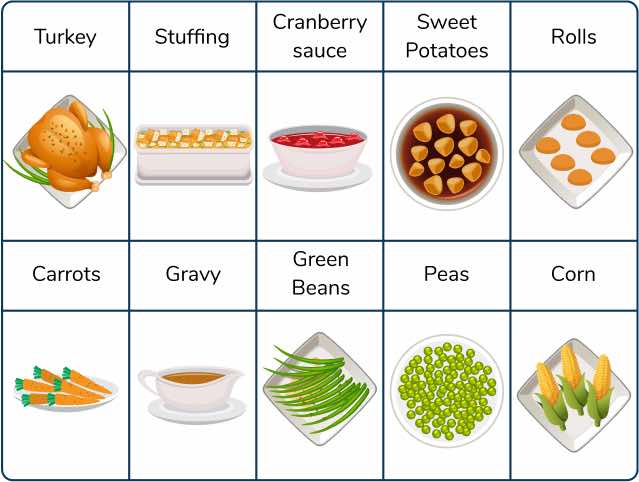
What to do:
- Give students some Thanksgiving items or images.
- Ask students to either classify the items by a given criteria (e.g. by color) or ask students to explain how they would classify the items.
- Share the ideas as a class – has anyone found a different way to classify the items?
Ideas for classifying:
- Color
- Size
- Can be eaten alone (e.g. turkey) or usually eaten with something else (e.g. cranberry sauce)
- Food I like and food I don’t like (this could start some interesting discussions!)
Make it harder:
- Students could classify into three groups or if they have only been classifying food, add other types of items. Encourage the students to discuss how they have classified their items.
Activities for Grade 3 to Grade 6
Here you will find Thanksgiving math games and activities which can be used from 3rd grade up until 6th grade.
4. Favorite data
Everyone has a favorite part of Thanksgiving and usually it’s to do with the food! Get everyone talking by gathering data about a specific question or let students pick a Thanksgiving themed question they want to find out about.
You will need:
- Pencils/paper to gather and represent data
What to do:
- Present your class with a question (we suggest ‘What is your favorite Thanksgiving food?’) or pick a Thanksgiving-themed question to explore together.
- Gather the data about your question as a class (students could do this individually or in small groups).
- Share the results of your data gathering as a whole class or your students could do this individually. You could tell pupils your preferred method to display the data (a table, a picture graph, or a bar chart).
Extend the activity:
Ask students questions about the data or get them to ask questions. Example questions:
- How many students preferred [food] to [food]?
- How many students voted for the most popular food?
- What is the difference between the most popular and least popular food?
Make it harder:
- Give pupils completed data – what can they tell from the data you have given them?
5. Thanksgiving battleships
Play this familiar game with a Thanksgiving twist to reinforce your students’ understanding of coordinates.
You will need:
- A partner
- Thanksgiving Battleship Board printable
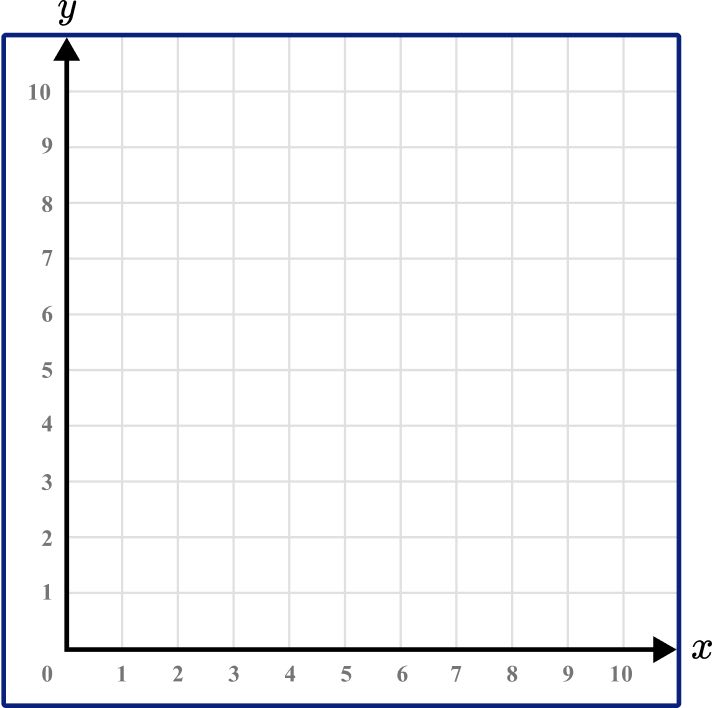
How to play:
- Explain to your students that they should first cut out and glue their Thanksgiving-themed images onto their battleship board. They should put them on the intersections between lines, not in the squares. They should do this without showing their partner.
- Take it in turns to guess the coordinates of a Thanksgiving-themed ‘battleship’.
- The first person to correctly ‘sink’ all the Thanksgiving-themed battleships is the winner.
Make it harder:
- Extend the grid into all four quadrants.
6. Thanksgiving symmetry
When thinking about Thanksgiving, there are lots of pictures that come to mind. There is obviously a lot of food, but it wouldn’t be the same without the fall decorations.
You will need:
- Leaves (optional)
- Square paper or coloured paper
What to do:
- Explain to students that Thanksgiving is in the fall season. During fall, the leaves fall from a lot of trees. Leaves are all slightly different, even when they are from the same tree. You could go around the school collecting leaves (if there are trees near your school) to look at the different shapes of leaves.
- Explore lines of symmetry by cutting out different leaves as decorations. Fold a piece of squared paper or coloured paper in half.
- Cut out the shape of a leaf. Can the students identify the line of symmetry?
- Can the students make a leaf with more than one line of symmetry? Does it still look like a leaf?
Make it harder:
- Give students leaves (either real leaves or drawn leaves) to investigate. Do the leaves have any lines of symmetry?
7. Turkey time
Turkey is often the star of the Thanksgiving feast. Use this multi-step approach to investigate how much turkey is needed per person, how long to thaw a turkey for, and how much the turkey will cost for a Thanksgiving Dinner.
Part one: how much turkey?
You will need:
- Optional weights
- Turkey Eaters printable template (optional)
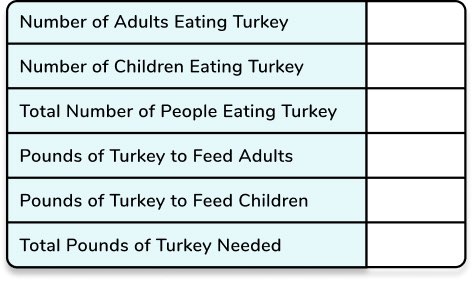
What to do:
- Tell your students that a general rule of thumb is 1–1½ pounds of turkey per adult person. If that seems like a lot, remember that a whole turkey comes with a lot of parts that don’t end up getting eaten!
- Tell students their task is to calculate how many pounds of turkey will be needed to feed the adults and children and the total for feeding all of the guests.
By only giving the students the information that the general rule of thumb is 1 to 1 ½ pounds per adult, their answers will vary. You may want to use weights to explore what 1 to 1 ½ pounds feels like and looks like before they start. They can then justify how much would be needed for each of their adult guests and children guests. Remind pupils that the given measurement is for adults, so they will need to decide what is reasonable for children.
Part two: thawing time
You will need:
- Turkey Eaters printable template (optional)
What to do:
- Explain that the majority of turkeys which people buy are frozen. The USDA (United States Department of Agriculture) says the safest way to thaw your turkey is in the refrigerator. This will allow the turkey to thaw at a consistent and safe temperature. The only problem is that this takes a long time. For every 4 to 5 pounds of turkey, it will take one full day to thaw.
- Ask students to use this information to calculate when their frozen turkey should be removed from the freezer to give it enough time to thaw completely before it is cooked.
Part three: turkey costs
You will need:
- Turkey Eaters printable template (optional)
What to do:
- Tell the students that the average turkey costs $2.95 per pound.
- Using this and the information from part one, calculate the cost of the turkey for Thanksgiving Dinner, and for the number of guests they will have.
Make it harder:
- Think about your individual guests, how much would each person actually eat (e.g. does one adult eat less than another adult? Is there an especially hungry teenager?). How would this change how much the turkey costs?

8. So many sides!
What would a Thanksgiving feast be without the sides? Use this activity to investigate how many sides students would need for their guests on Thanksgiving and how much it would cost.
You will need:
- So many sides printable
- Weights (optional)
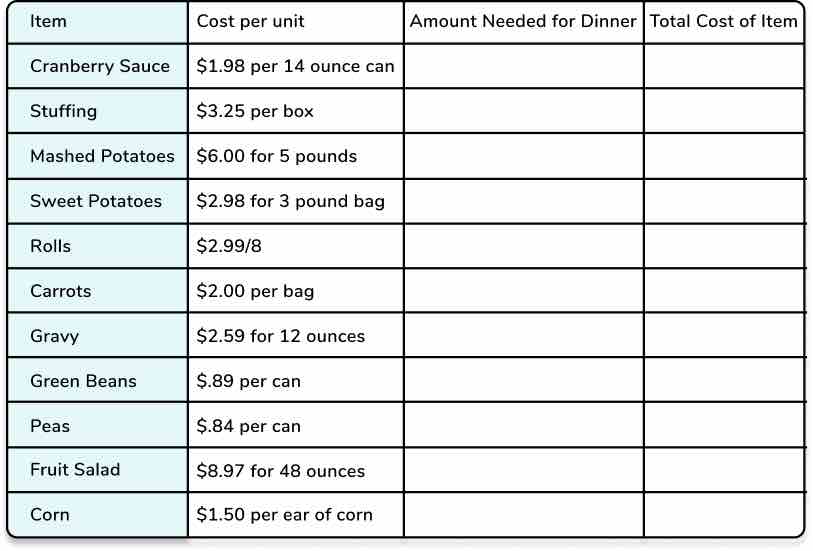
What to do:
- Explain that there are lots of different sides that can make up the Thanksgiving Dinner and that they all cost different amounts.
- Using the ‘so many sides’ printable resource, investigate how much of each side they would need for their Thanksgiving dinner. As with the ‘Turkey Time’ activity, weights could be used to help pupils comprehend how much of each item they would need.
Make it harder:
- Allow students to select their preferred sides and amend the list to show this.
- They will need to investigate the cost per unit as well as how much of each item they will need and the total cost.
9. Time to prepare
Thanksgiving dinner takes a long time to prepare. Along with the turkey, there are all the sides to cook. Investigate how long it will take to cook the sides alone.
You will need:
- Time to prepare printable
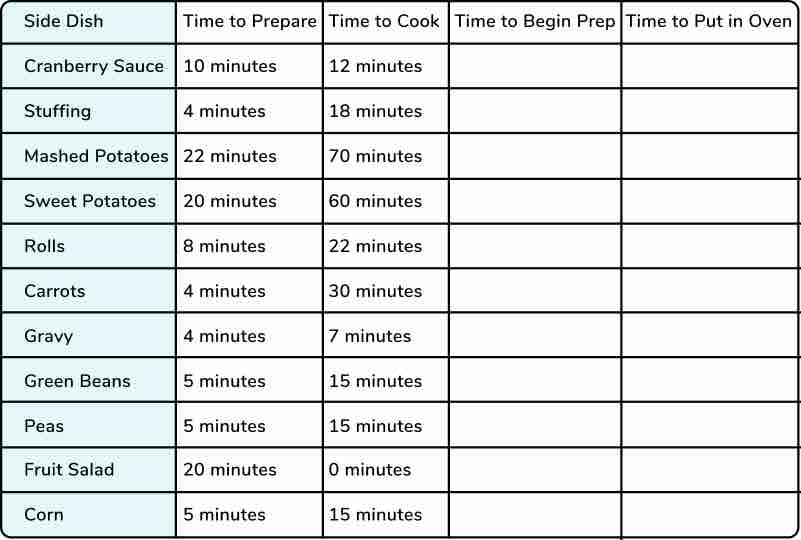
What to do:
- Tell students that their Thanksgiving feast will start at 2:00pm. With this in mind, they need to plan when to prep and when to cook their sides.
- Complete our ‘time to prepare’ worksheet.
Make it harder:
- Encourage the pupils to think logically, they can’t have everything in the oven at one time.
- As a small group, agree which sides they can cook first and which they need to cook the closest to 2:00pm.
10. Pumpkin pie
What is Thanksgiving without a good pie? Either send this recipe home with your students or make pumpkin pie together in class. The following recipe serves 8 people.
Ingredients:
- 1 (15 ounce) can of pumpkin puree
- 1 (14 ounce) can of Sweetened Condensed Milk
- 2 large eggs
- 1 teaspoon ground cinnamon
- ½ teaspoon ground ginger
- ½ teaspoon ground nutmeg
- ½ teaspoon salt
- 1 (9 inch) unbaked pie crust
Directions:
- Gather all ingredients.
- Preheat the oven to 425°F (220 °C).
- Whisk the pumpkin puree, condensed milk, eggs, cinnamon, ginger, nutmeg, and salt together in a medium bowl until smooth.
- Pour the filling into the crust.
- Bake in the preheated oven for 15 minutes.
- Reduce oven temperature to 350 °F (175 °C) and continue baking until a knife inserted 1 inch from the crust comes out clean. This should take 35 to 40 minutes.
- Let it cool before serving.
How to use Thanksgiving math activities
These Thanksgiving math activities can be used in several different ways, depending on your class and their needs. Students could work on these activities in small groups or pairs. Working in small groups or pairs will allow students to discuss their ideas and strengthen their knowledge of a task and therefore the underlying math content.
Throughout the games, we have, where appropriate, given you suggestions of ways to make the activities more challenging. These suggestions could be directed at a group of students or the whole class, depending on the class you are teaching.
While these activities are designed to be fun, we also want the students to learn from them. Use these activities to assess if any students need support on a particular topic covered by the activity they are undertaking.
Here at Third Space Learning, we use topical events to make math fun for your students. During our 1:1 online tutoring sessions, Skye, the AI tutor, will relate math problems to real-life scenarios to boost your students’ confidence and encourage them to enjoy math.
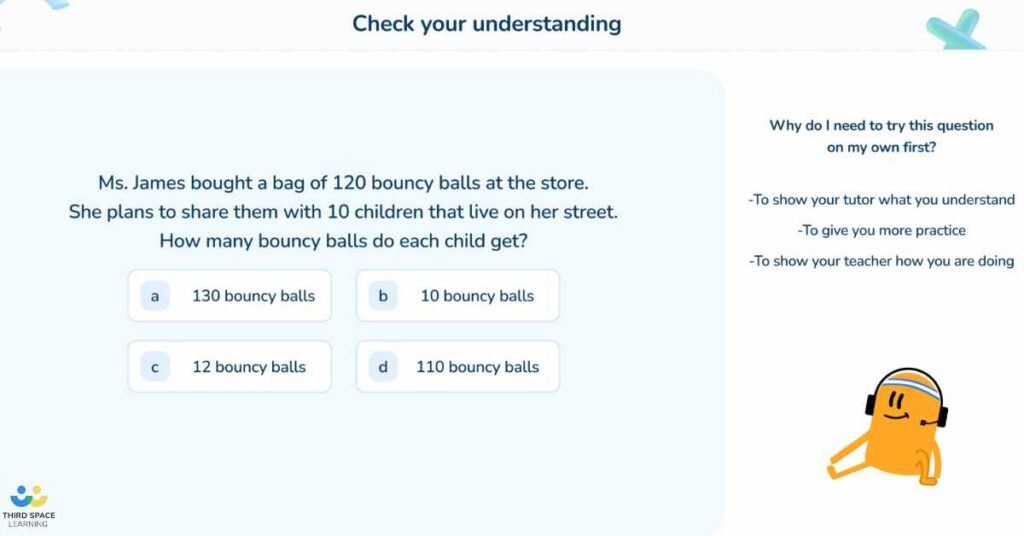
Benefits of Thanksgiving math activities
- Fun and interactive: Thanksgiving math activities will bring joy to any math lesson for all your students. They are a fun way to ensure your students are engaged as they will be able to apply their math skills to real-life scenarios.
- Boosts confidence and motivation: If your students are engaged, they will feel more motivated and want to succeed in the math activities. In turn, this will boost your students’ confidence in their math skills.
- Adaptable to different levels of difficulty: Thanksgiving math activities can be easily adapted to meet the needs of all your elementary students. With the activities mentioned in this article, you can always find ways to create additional math challenges to stretch your more confident students, while breaking down tasks for your less confident students.
- Accessible: Requiring minimal resources, Thanksgiving math activities are easy to incorporate into your classroom routine. They can be easily adapted and altered if you are on a tight budget.
- Builds teamwork skills: Thanksgiving math activities are a great way to encourage your students to work together. In doing so, they will build their teamwork skills and be able to help each other work through problems and share math ideas, all while having fun at the same time!
Looking for more fun math games? Check out our articles on fall math activities, Halloween math activities, and Christmas math activities to ensure your students don’t miss out on any of the seasonal fun. We’ve also got several articles sharing all our best fun math games, including Math Games For Grade 2, Math Games For Grade 3, Math Games For Grade 4 and Math Games For Grade 5.
READ MORE: 7th Grade Math Problems
Do you have students who need extra support in math?
Skye—our AI math tutor built by experienced teachers—provides students with personalized one-on-one, spoken instruction that helps them master concepts, close skill gaps, and gain confidence.
Since 2013, we’ve delivered over 2 million hours of math lessons to more than 170,000 students, guiding them toward higher math achievement.
Discover how our AI math tutoring can boost student success, or see how our math programs can support your school’s goals:
– 3rd grade tutoring
– 4th grade tutoring
– 5th grade tutoring
– 6th grade tutoring
– 7th grade tutoring
– 8th grade tutoring
